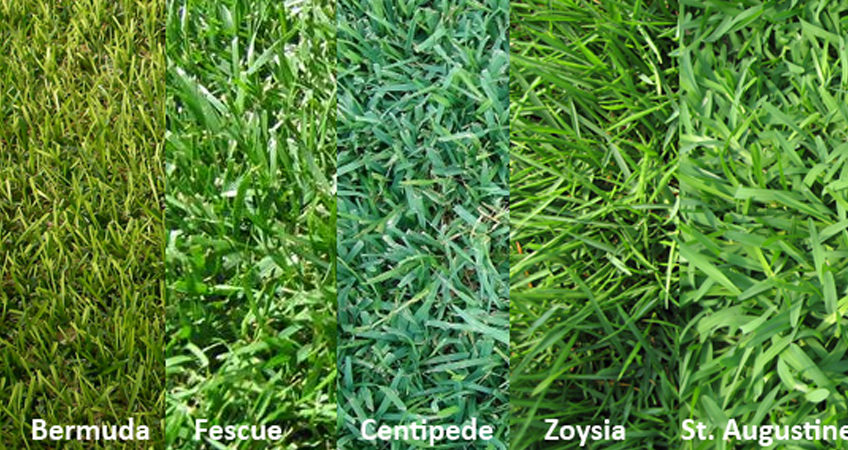There are two categories when it comes to grass, cool season and warm season. Cools season grasses stay mostly green all year around where warm season grasses turn brown during the winter. There a few options that will successfully grown in our region; the two most popular are Bermuda (warm season) and Tall Fescue (cool season).
Cool Season Grasses
Tall Fescue, Kentucky Bluegrass, Perennial Ryegrass, and Fine Fescues are perennial (comes back every year) cool season grasses that are typically used for lawns in the Mountain and Piedmont regions in North Carolina.
Tall Fescue is a reliable performer and easily started from seed. It is the best grass to plant if you want a year-round green lawn. Tall fescue thrives in sun or medium shade. It will not perform well in full sun in the coastal plain, especially if the soil is sandy. It can be seeded by itself or mixed with Kentucky bluegrass, fine fescue, or both, particularly where shade is a concern.
Kentucky Bluegrass produces a high-quality, medium- to fine-textured turf, at least when grown in the right climate; it is well suited for the mountains and can be grown in combination with tall fescue in the Piedmont. Kentucky Bluegrass prefers fertile, limed, well-drained soils in sun or moderate shade.
Fine Fescues include creeping red, chewings, and hard fescue. Fine Fescues are known for tolerance to shade, drought, and poor soil conditions compared to other cool-season grasses, fine fescues are sometimes included with tall fescue or Kentucky bluegrass when planted in the shade or subject to low maintenance. They are best adapted to the mountains but can be grown in the Piedmont.
Annual Ryegrass is used only when a temporary turf cover is needed. It is never recommended for permanent lawn mixtures because it dies in late spring, when temperatures approach 80ºF or higher. It is sometimes found in inexpensive commercial seed mixtures but should be avoided. Annual ryegrass is a problem weed in tall fescue because it cannot be selectively removed from the stand. Because annual ryegrass is an annual, it must be re-seeded each fall.
Warm Season Grasses
Bermuda Grass spreads by stolons and rhizomes, and it can invade flowerbeds and other areas because it has runners that spread rapidly both above and below ground. But bermuda grass is extremely drought tolerant, grows rapidly on any type of soil, and makes a good turf if fertilized and mowed low and often. Cultivar texture ranges from coarse to fine, and it forms a dense, durable surface when grown in full sunlight. The majority of cultivars will not tolerate shade. Bermudag rass is well adapted to sandy soils. Bermuda grass establishes quickly, withstands wear and traffic, and recovers rapidly from injury.
Zoysia Grass produces a very dense, wear-tolerant lawn that grows well in full sun and light shade. It has stiff leaves that produce a very dense turf, which people often describe as feeling like “walking on a cushion.” Zoysia grass grows more slowly than bermuda grass, and thus requires less frequent mowing. But because the leaves are stiff, mowing can be difficult unless the mower blades are sharp. The finer-textured Zoysia grasses ideally should be mowed with a reel mower, although they can be mowed with a rotary mower. Zoysia grass is very drought resistant. It rarely needs irrigation to survive in North Carolina.
St. Augustine Grass is a fast-growing turf grass best adapted to the coastal plain. It has a medium- to dark-green color and very coarsely textured leaves. With proper maintenance, it will provide a dense, lush lawn. St. Augustine grass is very shade and salt tolerant but is considered the least cold tolerant lawn grass. Seed is unavailable, so cultivars must be vegetatively planted. St. Augustine grass grows best in fertile, well-drained soils.

